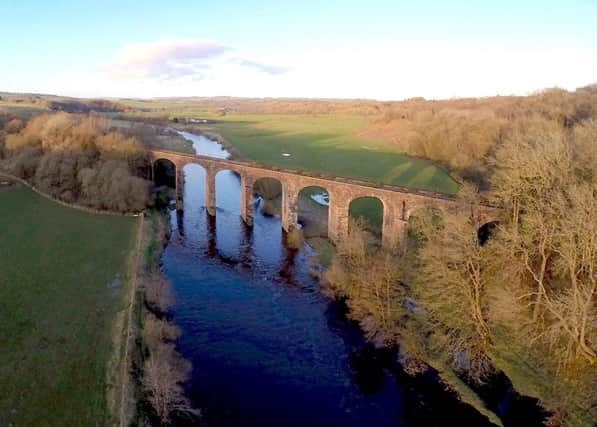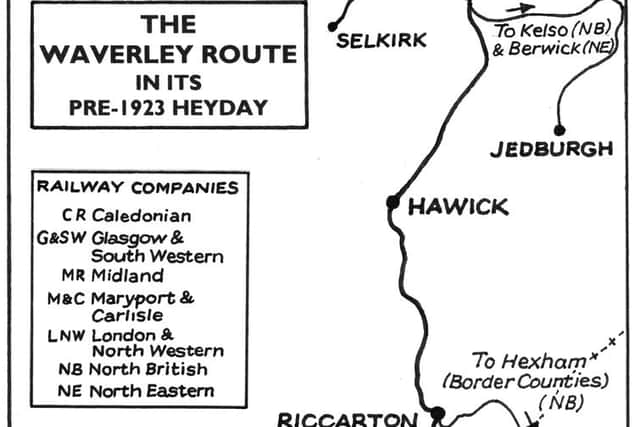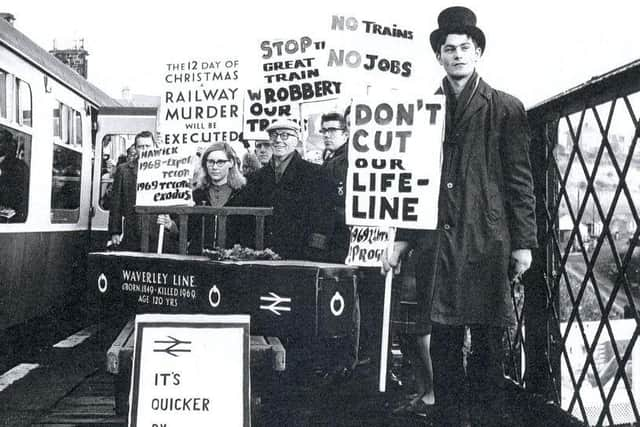Historic Border anomaly poses intriguing new twist for re-opening Edinburgh-Carlisle rail line


Within the English section of the line, a bizarre anomaly created during its construction meant trains briefly travelled in and out of a pocket of Scotland before crossing the Border again eight miles later.
The quirk happened because a river that formed the Border was diverted at Riddings, between Newcastleton and Longtown, to ease building of the route.
Advertisement
Hide AdAdvertisement
Hide AdThe Liddel Water moved, but the Border didn’t, so the railway travelled over an extra 200 yards of Scotland.


The North British Railway, which built that section in 1861, is believed to have kept it quiet to avoid any fuss.
However, rail expert John Yellowlees said it had possible implications should the 98-mile route, which was re-opened from Edinburgh to Tweedbank five years ago, be restored all the way to Carlisle.
Both the Scottish and UK governments are examining its feasibility, which is expected to form part of the latter’s Union Connectivity Review into transport links between different parts of the UK.
Writing about the “Riddings Anomaly” in the North British Railway Study Group Journal, Mr Yellowlees said: “It seems that little mention was made of this change, perhaps to avoid the complication that would doubtless have arisen if the two countries had been alerted by the making of formal applications to the relevant authorities.


“One can only speculate as what complications might arise in the event of the new Borders Railway being extended right through to Carlisle on the former alignment of the erstwhile Waverley Route.”
Andrew Boyd, a retired solicitor who campaigned to prevent the line’s closure in 1969, said: “If it was ever re-opened, it could lead to an interesting situation with different licensing laws applying over that short section, and other such consequences.”
But the anomaly, which left a two-acre pocket of land hemmed in by the river and railway, did cause problems for Ian Ellithorn when he bought it as part of Riddings Farm around 2002.
Advertisement
Hide AdAdvertisement
Hide Ad

He had to employ Scottish solicitors for its conveyancing while the rest of the 300-acre estate – in Cumbria – was handled by his English solicitors
Mr Yellowlees said the new owner also found he could not fish on the Scottish section of the river on a Sunday, while this is permitted on English sections.
However, Mr Ellithorn is reported to be honoured to own the unique feature.
The anomaly has inspired a key part of Edinburgh author Jim Forbes’ new thriller Borderline, in which the discovery of the old course of a stream reveals a property is in Scotland, affecting a family’s inheritance rights.


Mr Forbes said: “The rail anomaly is probably not a major complication, but if Scotland becomes independent you have the potential for not just an administrative complexity but maybe even an international incident.”
He pointed to a further anomaly on the Border between Scotland and England along the River Tweed, which deviated to include a field on the south bank which is in Scotland.
Mr Forbes said it commemorated an annual game of Ba – medieval football – between Coldstream and the English village of Wark.
The winner took ownership of the meadow, usually the Scottish town.
A message from the Editor:
Thank you for reading this article.
We're more reliant on your support than ever as the shift in consumer habits brought about by coronavirus impacts our advertisers.
If you haven't already, please consider supporting our trusted, fact-checked journalism by taking out a digital subscription.
Comments
Want to join the conversation? Please or to comment on this article.